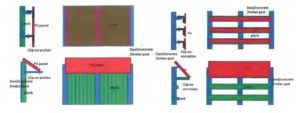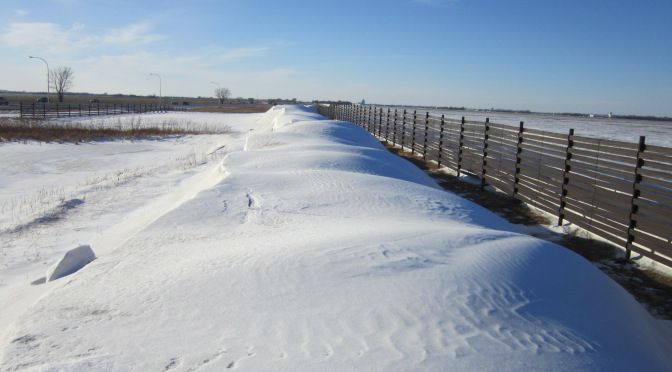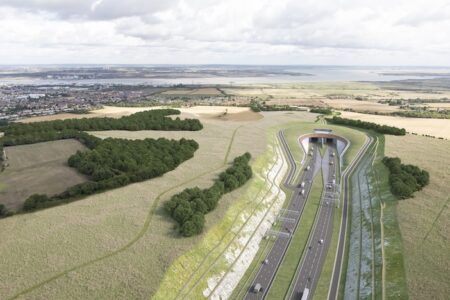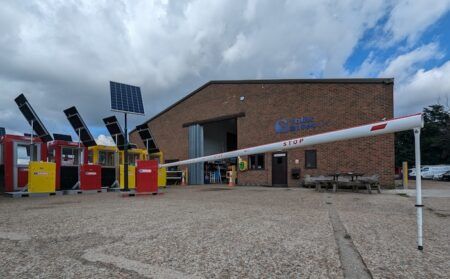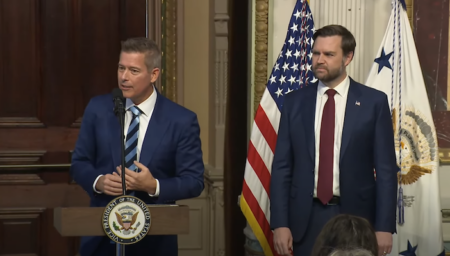A newly-funded Minnesota Department of Transportation (MnDOT) study is investigating how to make use of existing noise barriers and snow fences alongside the state’s highways to harvest clean and cost-effective energy.
There are currently vast deployments of noise barriers and snow fencing in place alongside Minnesota’s highway system, and although they serve their intended purposes, they could be expanded to harvest solar energy at no extra cost to taxpayers. MnDOT is interested in extending the ability of this roadside infrastructure to have the capacity of harvesting solar energy, which is captured from the sun and converted into thermal or electrical power. It is a clean and abundant renewable energy source and generally requires very little maintenance after installation. Solar energy has a variety of uses, including providing electricity to power street lamps and homes, heating and cooling spaces, and heating water.
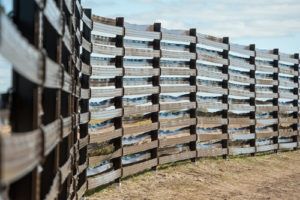 The innovative nature of the project brings many unknowns that MnDOT hopes to answer, such as:
The innovative nature of the project brings many unknowns that MnDOT hopes to answer, such as:
Is it possible to engineer these structures without disrupting their functionality?
What safety measures need to be taken to ensure the public and MnDOT workers stay safe if they come into contact with the panels?
What are the lifecycle costs of installing and maintaining solar?
How much energy could they generate and how does that connect with existing power grids?
One estimate shows that a thousand miles of solar panels could power all the street lights along Minnesota highways or 43,333 residential homes, assuming that each solar panel is 330W and 1,000 panels could generate up to 330kW per mile.
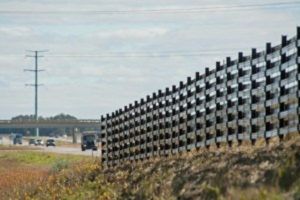 A diverse team of MnDOT experts, from the field of environmental stewardship to traffic engineering, will guide the research and review findings. The study will include surveys, lab testing or modeling of possible design options and a cost-benefit analysis, which are planned to be completed by June 2021. Currently, the research team is developing surveys to better understand public opinion on solar energy, including energy prices and solar panel infrastructure, power companies’ interest in purchasing solar energy generated through the infrastructure, and legal considerations for harvesting solar energy through the rights-of-way.
A diverse team of MnDOT experts, from the field of environmental stewardship to traffic engineering, will guide the research and review findings. The study will include surveys, lab testing or modeling of possible design options and a cost-benefit analysis, which are planned to be completed by June 2021. Currently, the research team is developing surveys to better understand public opinion on solar energy, including energy prices and solar panel infrastructure, power companies’ interest in purchasing solar energy generated through the infrastructure, and legal considerations for harvesting solar energy through the rights-of-way.
“Snow fences and noise walls are structural barriers with a singular purpose. Snow fences are intended to limit snow from drifting onto our roads and noise walls are intended to reduce noise to a comfortable level for communities living near our highways. Finding a way to integrate solar that maintains their structural integrity could transform the use of these barriers from single purpose to multi-purpose,” said Dan Gullickson, MnDOT’s blowing snow-control shared services program supervisor, who is overseeing the project. “We’ve seen some applications of solar panels on noise walls, primarily in European countries, but the addition of solar panels to snow fences is an entirely new concept.”
Mijia Yang from North Dakota State University, the lead researcher, added, “We know Minnesota and North Dakota winters bring a lot of snow, which is disruptive to our travelers and farmers. We hope to create a sustainable solution that aids drivers and farmers, but also harnessing energy which would be able to offset the cost of construction and installation.”